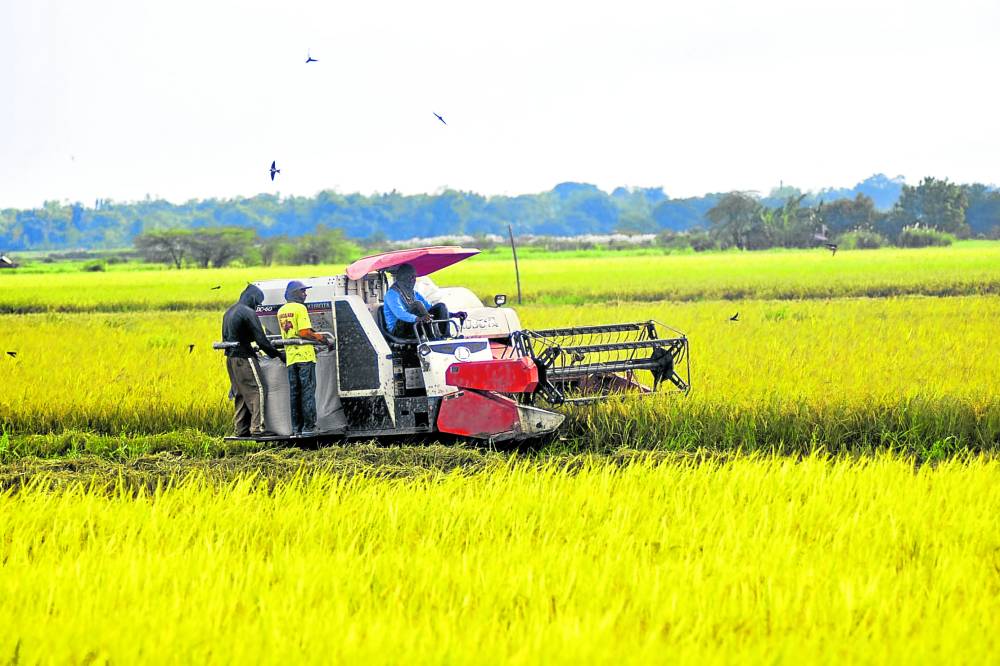Agriculture has been really pathetic in this country, not only under this administration but for the past 20 years. According to the Philippine Statistics Authority, Philippine gross domestic product grew by 7.7 percent year-on-year in the fourth quarter of 2021, resulting in 5.6 percent full-year growth. But the economic sector of agriculture (agriculture, forestry and fishing) only grew by 1.4 percent. In fact, for the full year, agriculture even contracted by 0.3 percent while industry and services registered positive growth rates of 8.2 percent and 5.3 percent respectively.
This is in spite of the grand statements on the Department of Agriculture (DA) website such as “A food-secure and resilient Philippines” or “The way forward: level up Philippine agriculture.”
Incredible importation
While the DA boasted of palay production of 19.29 million metric tons in 2020 and 19.96 million MT in 2021, data from the Bureau of Plant Industry showed that rice importation also continued to grow, reaching 2.4 million MT in November 2021 or almost 16 percent higher than the 2020 import volume and expanding by 32 percent year-on-year to 2.77 million MT, the second-largest import volume by the Philippines in history.
And this is expected to grow: a report by the US Foreign Agriculture Service forecasts an importation this year of 2.9 million MT. Vietnam is the country’s top source of imported rice, accounting for almost 2 million MT of the 2.29 million MT total volume in November 2021. The Philippines is now the second largest importer of rice in the world, next only to China.
The incredible imports are not confined to rice. In January, the government announced it would import 60,000 MT of small pelagic fishes such as round scad (galunggong) and mackerel to cover part of an expected shortage in local supply in the first quarter of 2022. As of December 2021, National Meat Inspection Service records showed that the inventory of frozen pork in accredited cold storage was at 75,024.9 MT as of November 2021 (in fact it was at 76,953.3 MT just the week before that), with imported frozen pork accounting for the bulk of the inventory at 73,418.39 MT compared with local frozen pork which only had a share of 1,606.52 metric tons in the inventory.
Evidently, the government has failed at helping our farmers by relying on importation instead of strengthening agricultural production.
St. Isidore the Farmer
At this point, Philippine agriculture is a hopeless case. Every campaign season, candidates claim that they will improve agriculture. Yet every administration fails and goes back to unbelievable levels of importation instead of supporting Filipino farmers. We need a miracle!
Perhaps we can pray for the intercession of St. Isidore, the Farmer, also known as St. Isidore the Farm Laborer or San Isidro Labrador, patron saint of farmers (also patron saint of Madrid) for that miracle. Yesterday, March 12, marked the 400th anniversary of his canonization, along with St. Ignatius of Loyola, St. Francis Xavier, St. Therese of Avila and St. Philip Neri.
In the Philippines, many festivals are held in honor of this farmer saint, whose feast is on May 15. Some of the festivals include: the Apit Festival in Allacapan, Cagayan; the Sabugan ng Biyaya festival in Agdangan, Quezon; the famous Pahiyas Festival in Lucban, Quezon; the Kangga festival in Mogpog, Marinduque, where they also highlight farming traditions; and the Bariw Festival in Nabas, Aklan, showcasing local bariw products such as baskets.
Let’s pray hard and hope a miracle comes before St. Isidore’s feast day in May, with the blessing of a new administration genuinely committed to improving agriculture in the country!


